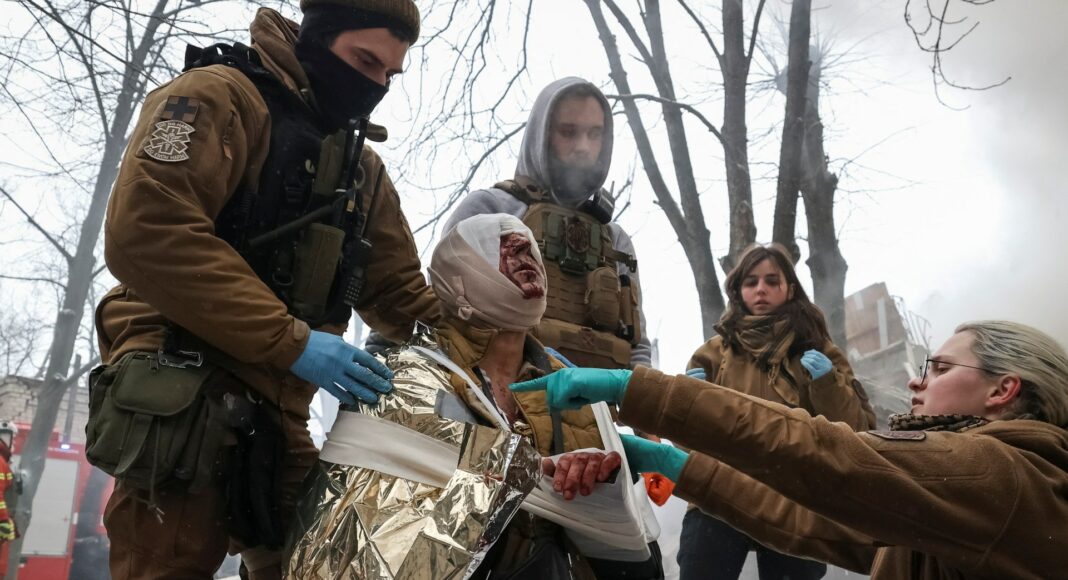NATO has signed a large ammunition deal that it says would help it supply Ukraine with desperately needed stocks.
The military alliance announced on Tuesday that it has signed a deal worth 1.1 billion euros ($1.2bn) to buy artillery shells. The move comes amid intensified exchanges of fire between Russia and Ukraine since the end of last year, which have depleted the latter’s weapons stockpiles.
NATO greenlit the purchase of 220,000 rounds of 155mm ammunition, the most widely sought-after artillery shell, noting that bulk buying for member states should ensure lower prices. Sources said the ammunition would be supplied by French arms maker Nexter and Germany’s Junghans.
“This is important to defend our own territory, to build up our own stocks, but also to continue to support Ukraine,” said NATO Secretary-General Jens Stoltenberg.
“The war in Ukraine has become a battle of ammunition,” he told reporters. “We cannot allow President [Vladimir] Putin to win in Ukraine … That would be a tragedy for the Ukrainians and dangerous for all of us.”
Rescuers work the scene of a building damaged by a Russian rocket attack in Kharkiv, Ukraine, January 23, 2024 [Andrii Marienko/AP Photo]
Shoring up support
As progress on the front line has stalled in recent months, Russia and Ukraine have doubled down on exchanges of fire using artillery, missiles and drones.
However, Russia’s arms industry far outweighs Ukraine’s and Kyiv is struggling to secure both financing and weapons supplies from its Western allies needed to continue competing with Moscow’s firepower.
According to European Union estimates, Ukraine was firing approximately 4,000 to 7,000 artillery shells each day last summer, while Russia was launching more than 20,000 shells daily in its neighbour’s territory.
Drawing on its deep stockpiles, Russia has in recent weeks concentrated on air raids in a bid to drain Ukraine’s air defence systems. Officials in Kyiv say Russia launched 500 drones and missiles between December 29 and January 2.
Ukraine and its allies are scrambling to keep up. Kyiv has said it intends to produce one million drones in 2024.
Although the European Union fell short of its pledge to supply one million artillery rounds in 2023, officials have said that they expect the European defence industry to raise production by the end of this year.
Polish Prime Minister Donald Tusk on Monday was the latest foreign leader to visit the country, announcing a loan to buy larger weapons and commitments on joint manufacturing.
However, NATO noted that the shells bought under the new deal will not arrive for two to three years.
And the United States, Ukraine’s main supplier, is currently unable to send Ukraine any ammunition or weapons as it waits for approval from Congress on budgetary needs.
Ukraine’s President Volodymyr Zelenskyy, right, welcomes Poland’s Prime Minister Donald Tusk prior to their meeting in Kyiv [Handout via AFP]
Massive assault
Russia launched its latest air assault against Ukraine on Tuesday, killing at least seven people, according to the UN and Ukrainian authorities.
Ukraine said that the air raids included more than 40 ballistic, cruise, antiaircraft and guided missiles, in what the United Nations said appeared to be the heaviest bombardment since early January, when hundreds of Ukrainian civilians were killed.
The recent Russian bombardment was “an alarming reversal” of a trend last year that saw a drop in civilian casualties from Kremlin attacks, the UN said.
More than 10,000 civilians have been killed and nearly 20,000 injured since Russia’s full-scale invasion in February 2022, the UN said.
Tuesday’s onslaught in Kharkiv, in northeastern Ukraine, killed six people and injured 57, including eight children, the UN said.
The missiles damaged about 30 residential buildings and shattered hundreds of windows in icy weather, regional governor Oleh Syniehubov said.
Russia used S-300, Kh-32 and hypersonic Iskander missiles in the attack, he said.
A five-storey apartment building appeared to have been directly hit by several missiles around dawn, the UN Human Rights Mission in Ukraine said in a statement.
An unknown number of people were trapped in the rubble with the temperature falling to minus seven degrees Celsius (19 degrees Fahrenheit), said Kharkiv Mayor Ihor Terekhov.
Kharkiv, about 30 kilometres (18 miles) from the border, has often felt the brunt of Russia’s winter campaign of long-range attacks that often hit civilian areas.
Four districts of Kyiv came under an attack that injured at least 20 people, including a 13-year-old boy, according to Mayor Vitalii Klitschko. Officials corrected initial reports that a civilian had been killed in the capital, saying the wounded person was hospitalised on life support.
UN staff visited a Kyiv neighbourhood with a damaged residential building, a school, a sports centre and a kindergarten.
A missile also killed a 43-year-old woman and damaged two schools and eight high-rise buildings in Pavlohrad, an industrial city in the eastern Dnipropetrovsk region, the country’s presidential office said.
In Balakliya, in the Kharkiv region, an 88-year-old man and a 78-year-old woman were rescued from the rubble of a house after Russian shelling, it said.



